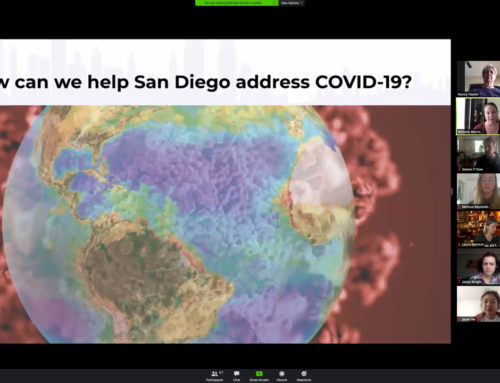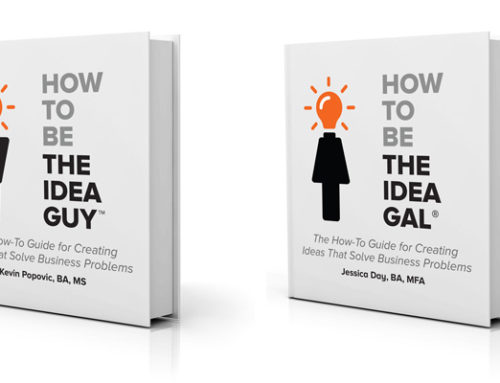Playbook: How to Create an Innovation Funnel
The Idea Guy • July 3, 2017
If you don’t have a process to create new ideas, your company is not likely to have new ideas.
Where do great ideas come from? Why do some organizations have better ideas than others? Why do some companies seem to always have a lot of big ideas and others don’t have one?
All of these questions have the same answer: a process.
Yes, there are ideas noted as coming from moments of inspiration, i.e., the “Eureka” moment, and… statistically, they are few and far between.
“Inspiration is not manageable, and Eureka does not scale.” – The Idea Guy
Companies need new ideas to compete. Leadership needs ideas that solve a specific problem, when they need them, and within budget. Management needs clear direction on the problem, and a method to communicate up the chain and down the line. Employees need to know how they can contribute, and that their contributions are valued.
These often competing initiatives have contradictory requirements that keep many companies from making any progress towards innovation. With this disconnection, the results often range from frustration to disappointment to, eventually, failure.
The Idea Inside the Innovation Funnel
An innovation funnel is designed to facilitate a process for people to create new ideas, independent of the subject matter, that leadership can consider for implementation.
The idea is relatively simple: a group of people start at the top and ideas come out the other end. The more people that participate, the more ideas that are created.
Four key components make up an innovation funnel, each of which is designed to work with the other. Much like a recipe, omitting or altering an ingredient changes the result.
1 LEARN : Learn How to Create New Ideas
A learning event initiates the process by helping everyone understand how a new idea is created. Most events include an overview of what’s to come, establishes some common language and shares stories that all job titles can relate to about other companies, just like theirs, that created a new idea with the same process.
Sharing the company’s current issues provides direction and initiates purposeful conversations. Engaging activities, like a “Persona Wall” (below), steps everyone through initial collaboration, and demonstrates this effort is different than others before.
Design Thinking has become the leading process for creativity amongst business leaders, in every sector and industry. Championed by the D School in Stanford, the Design Value Index reports companies that are design-led out perform others by 211%. McKinsey & Company confirmed the same improvements in their own Design Index.
2 WORK : Positive Experience Builds Confidence
Most business people can collaborate in a design thinking workshop for their company: they just need an experienced facilitator to lead them through the steps, answer their unique questions, and provide activities that keep them engaged.
This workshop is designed to help people learn by doing in a short amount of time. Each person learns how to create a unique problem statement that communicates the things they see, from their points of view, in a common language that everyone else will understand.
Like-minded people can team-up to generate potential solutions, share what they have created, and identify opportunities to move forward. Diverse teams can combine competing perspectives to find common ground and create win-wins.
At the end of the workshop, every team has a prototype of a solution to their problem, can communicate about its potential, and has gained the confidence in their ability with this positive experience to continue with their new idea.
3 DEVELOP : Develop Ideas with Potential
Ideas that have merit move through the funnel into development; the feasible, viable, and desirable. Teams are coached through the funnel starting with the Problem Statement, addressing who they are helping, do what, in order to achieve a specific goal.
With consensus from the team on the problem, a project plan is designed to demonstrate how they may solve the problem, including a Gantt chart of activities, and a budget for the investment. With leadership approval, teams move forward.
During Development, groups work on executing the project plan, as designed. The coach reviews team deliverables as a go / no go step, helping to maintain the quality control of the process. Although problem complexity and development times may vary, the process remains the same.
4 PRESENT : Share the Story Behind the Idea
When the project plan has been completed, teams document their story, providing insights discovered along the way. All teams follow the same story-sharing template to document their work. Including artifacts provides proof of their work and what they learned that contributed to their big idea.
Guidelines for presentation help to organize teams into a structured event. Reviewing the criteria reminds teams of what’s expected and the accepted methods of evaluation.
Evaluating ideas based on objective criteria helps to determine which ideas have the greatest potential. A quick-fill evaluation form facilitates audience participation and provides more data points for teams, in addition to those of leadership and management. Based on all data, quantitative and qualitative, leadership can make an informed decision on next steps.
Is an Innovation Funnel Right for You?
Businesses need new ideas to compete, and process – like an innovation funnel – to help execute critical activities that lead to innovation, but not every organization will have the same results.
The first reason: some people will be better at this than others. Although everyone has the potential to be more creative, not everyone is equally creative.
The second is commitment. Some companies are committed to innovation, at every level. These design-led organizations, like Apple, Walt Disney and Starbucks, consistently outperform others by 200% because they take this process seriously and invest over time.
The third, and arguably the most important, is mindset. Your organization must want the innovation, and be willing to take the steps to make it happen: to challenge knowledge, increase observation, defer judgment, and work to improve creativity.
Create a Custom Innovation Funnel
To start discussing how you could create an innovation funnel customized for your organization, click this link to schedule a free 15-minute personal conversation with The Idea Guy®.




